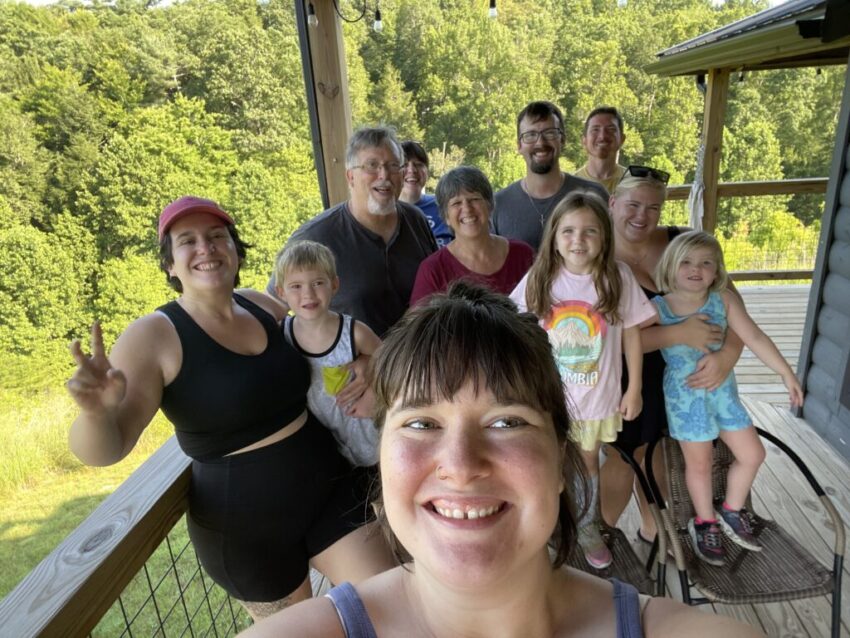Liz is a third-generation Hungarian American raised in Youngstown, Ohio, studying and living in Nebraska, and settled in Evansville, Indiana, in 2006. She understands some Hungarian, but doesn’t speak it fluently; nevertheless, she considers herself a Hungarian. She not only tries to pass on her Hungarian heritage to her four children and three grandchildren, but, stepping in her mother’s, Elizabeth A. Szabo’s, footsteps—who raised her and her three brothers as a widow—continues and diversifies her business, Magyar Marketing, launched in 1988. Her various projects help others to (re)connect to their Hungarian heritage via language and cooking classes, folk art, books, podcasts, and the Hungarian Heritage Expo, which takes place again on 25–29 August 2025.
***
Tell us about the arrival of your family in the U.S.
Three of my grandparents, as well as a set of my great-grandparents, were born in Hungary. Some of them immigrated to Pennsylvania to a very small town with coal mines, called McAdoo. My maternal grandmother was born there in the late 1890s and then moved to Cleveland, OH. My mom grew up on Buckeye Road in Cleveland and was a member of that strong Hungarian community there. My dad was born on the west side of Cleveland, and then his family moved to Youngstown, OH, to start their family business in 1937, and my dad went to high school there. My parents actually met through my mom’s cousin. They married and lived in Youngstown; I was born and raised there, too.
I only knew my paternal grandmother since my other grandparents had died either before I was born or when I was very little. She would hardly ever speak English, even though she came to the U.S. when she was four. Their family business, Szabo & Son’s Funeral, was started by my grandfather, and then two of his children, my dad and my uncle, helped run the business. Ultimately, my uncle and my two cousins took it over. My uncle passed away, and my cousins recently retired, so the company no longer exists. However, it was running for a long time, serving predominantly the Hungarian population, providing funeral services in Hungarian and in an ecumenical way. Youngstown used to have a pretty strong Hungarian population in the 20th century. There were five Hungarian churches co-existing, as well as a Hungarian club and regular events.
To what extent did your parents and you live a Hungarian life?
Both of my parents spoke Hungarian at home, but since they learned English first in school, they didn’t expect us to be fluent in Hungarian—I think in part because it was easier for them to have some conversations at another level without us. But also, there were no intentions of moving back to Hungary. We certainly knew Hungarian songs, the table prayer, greetings like Jó reggelt (Good Morning), etc. As is normally the case, the oldest child in the family hears and speaks the most Hungarian. My two older brothers certainly heard more. Nevertheless, being Hungarian was a very big part of our lives. When I was little, I was involved in the St. Stephen’s Church Hungarian folk dance group. We weren’t Catholic, but by that time, it didn’t matter; they were happy to have dancers. On the back of the multiple waves of Hungarian immigration to the U.S.—including and up to the 56ers generation—all churches were very strong and somewhat exclusive. As years went by, they opened up to include others—that’s a healthier mentality; their previous approach created a lot of competition and less cooperation…A lot of Hungarians are not about cooperation today either…
When some people asked me: ‘When are you gonna learn Hungarian?’, or: ‘What was wrong with your mom for not teaching you Hungarian?’, I usually answer: ‘Come and talk to me in 100 years…’ My family has been living outside of Hungary in a non-Hungarian environment for more than 100 years—I think it’s pretty amazing that I know any Hungarian…And it’s not only me, but even my grandchildren know some words, expressions, and food. They call me Anyu, and so do my children, because Nagyi was my mom. I don’t mind, and I find it so sweet when they hear some Hungarian and say to me: ‘Anyu, this is in your language.’ Indeed. I’ve always considered myself a Hungarian, even if I haven’t mastered the language. I remember when I was a kid and people asked me about my nationality, I always answered: ‘I’m Hungarian.’ We weren’t speaking fluently, but our food, folk art, music, stories, folk tales—we had so much Hungarian stuff…How could we not be Hungarians?!
What about a Hungarian weekend school or Hungarian scouting, where you could have learned more Hungarian?
There was neither a Hungarian weekend school nor Hungarian scout troops in Youngstown. Some people I knew did scouting in Cleveland, but they were growing up in a regular family with two parents and were speaking Hungarian from birth—unlike us…Nevertheless, there was a big Hungarian youth camp in Ligonier, Pennsylvania, in the Bethlen Home. Our dad passed away in 1970, and three years later, my mom took us all to Hungary for a school semester so she could study the Kodály method in Hungary. Beforehand, in preparation for that trip, in the summer, she sent us to this overnight camp for a couple of weeks, where we learned Hungarian and did some folk art—it was a great experience. When she finished her program in Hungary, we visited Transylvania for four or five days—another great, but not risk-free adventure: in the 70s, Hungarian visitors, especially with U.S. passports, were not too welcome in the communist Romania…I still don’t believe that she did all this with us. I was eight, my younger brother was five, and my older brothers were 12 and 16 at the time…
Your mom must have been very brave for such an adventure…Why did she want to learn the Kodály method? Was she a music teacher?
I think she was working on her master’s degree in ethnomusicology at the time, but she didn’t end up teaching after she earned it. She would do little classes here and there about the method, but I think she was just trying to figure out how to support her children alone, and she needed to have at least a master’s degree for that. She eventually ended up becoming the executive director for the International Institute, which helped immigrants to start a new life in the U.S.: obtain a driver’s license, find places to live, employment, etc. In fact, both of my parents helped the 56er refugees and, of course, they were very active for the cause in the 50s and 60s. Since they were both fluent Hungarian speakers, it was easy for them to help bridge some gaps in conversation. My dad even went to Camp Kilmer in New Jersey to bring Hungarian refugees to Youngstown. I wasn’t born at that time, but I know there were people who stayed in our home temporarily through the years, with whom our parents had kept in touch for several years afterwards. But even in the 80s, there were still some refugees arriving—and the Institute worked with refugees not only from Hungary or Transylvania, but from everywhere around the world, like Vietnam, Poland, etc.
What memories do you have from that first visit to Hungary and Transylvania in the 70s?
I only have spotty memories, or sometimes just the smell of things. For example, I remember the smell of coal. I don’t smell that at very many places, but when I do, all of a sudden it reminds me of being in Hungary…First we rented an apartment on the Pest side, but the landlord stole our stuff—I’m sure it looked like my ‘American’ mom had to be wealthy to afford temporarily living and studying abroad, but in fact, she wasn’t, and we had to move to a new place, this time on the Buda side. I remember the first Mikulás in Hungary. Getting milk in bags was also very interesting. I wasn’t fluent in Hungarian and had a difficult time communicating with my age group. In school, I could do math and art, but otherwise I couldn’t do very much—but I’m sure my mom understood that the experience of being there far outweighed the difficulties of the language barrier.
‘I’ve always considered myself Hungarian, even if I haven’t mastered the language’
Some people we knew were actually sending money through my mom to their families in Transylvania. When we crossed the Romanian border, my mom always had bribes for the border patrol guards…My brother remembers that she asked us to start a fight at the border, so we were screaming at each other and hitting each other, making a big scene and diverting attention, so that finally they let us go. We could, of course, fight at any time spontaneously, but mom’s request to do so seemed pretty exciting…
What did you study? How did you end up with what you do now?
I have a bachelor’s degree with a major in biology and a minor in writing. I also have two master’s degrees, one in family life ministry and the other in business leadership. Education is important to me, but I don’t pay attention to the titles behind it, because it all leads to who I am. When my mom started her business in 1988, her goal was to help people pass the Hungarian heritage onto their families, including ours. She noticed we were all marrying non-Hungarians, so her grandchildren were going to be only about 50 per cent Hungarian; therefore, she involved all of them in her business…
What was her business about?
It was called Magyar Marketing. She sold Hungarian products before the internet era, so we’d go to all kinds of Hungarian festivals and fairs in other states as well as to little church events. The very first thing she had was a T-shirt saying: ‘Hi, I’m Hungarian’. The next one was paprika. Later on, she was selling all kinds of stuff, food like noodles, kolbász, etc., as well as books in Hungarian. Some things she got from Hungary, others from the U.S., since it didn’t make sense to import them from Hungary, like coffee mugs, aprons, and some other things we have designed. There were import businesses at that time she cooperated with. Somebody else, for example, was importing porcelain, so she’d buy some from them, then she’d resell it. Any time she’d go to Hungary, she’d find a few things she brought back to sell, too.
My mom was very connected to the Hungarian population across the U.S. and was always driven by the bigger goal of bringing people together beyond trading. She had worked with the William Penn Association as their fraternal director. She had cooperated with Professor Ágoston Molnár, the director of the American Hungarian Foundation in New Brunswick, NJ, on lots of projects. She also worked with the Catholic Hungarian publishing company in Youngstown to come up with a Christmas Carol book translated into English. Learning songs is a great way to learn pronunciation, and even without necessarily understanding the meaning of the lyrics. When she passed away, none of us siblings were in a good position to take on the business, but ‘her people’ told me: ‘Somebody needs to do this; we need your help.’ So I ultimately took it over. My Hungarian is not very good; I can understand the orders if someone wants to speak in Hungarian, but I answer them in English. I can’t converse with the customers like my mom did, and I know they missed talking to her. But everyone has been so encouraging and appreciative, and we are happy to help. We’ve been running it since 2009, and it has been a fun journey. We have all learned so much!
Who is ‘we’? Who are you partnering with?
Me and my husband, Don. Our kids helped a lot, too. We said: ‘Let’s work on this together for three years, and see if we want to continue it.’ We planned to take a family trip to Hungary in 2012, which we had wanted to do with my mom, but she was sick and didn’t feel strong enough to travel. We offered our children the opportunity to earn money for their plane tickets by working at festivals, taking orders on the phone, and then helping ship products to customers.
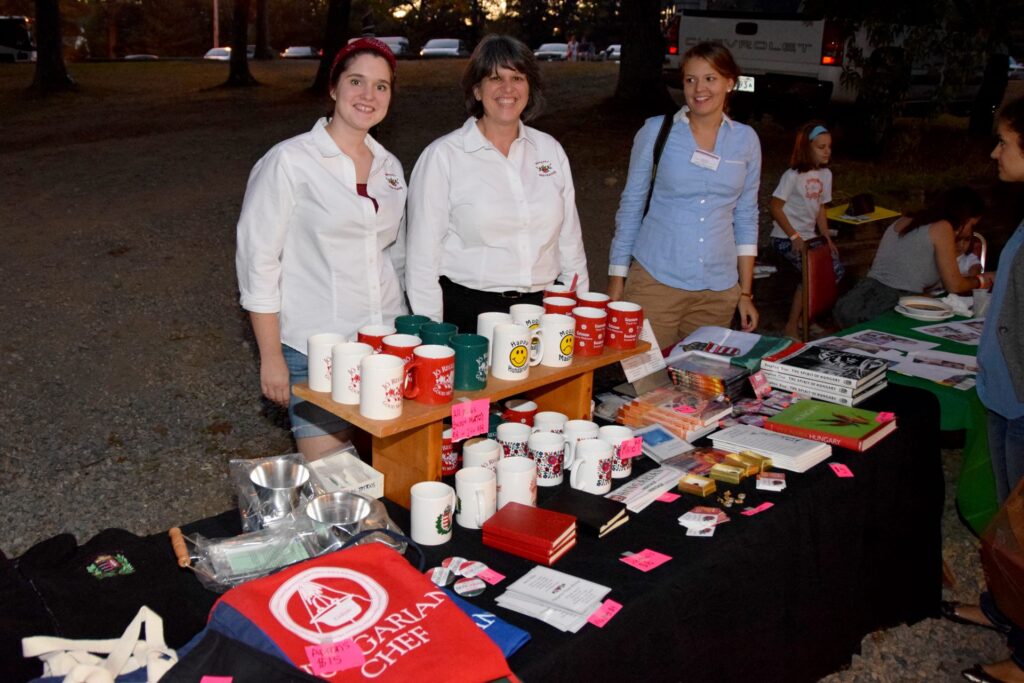
Everybody supported the idea of traveling to Hungary and helped out. One year earlier, in 2011, we found out that we actually had relatives there that we didn’t know. They contacted us and we established pretty quickly that they had pictures of our family, and we had pictures of their family—so we must be related. The way they found us was very exciting. My grandmother had some first cousins in Tiszakeszi she had never met, but they had written letters to each other through the years. They found some of these letters from my grandmother and great-grandmother from 1957 or so. They would also send packages to these people, who still have some of those things that were sent to them from the U.S. Grandmother named her three sons in her letters—that’s how they figured out how to get in touch with us. In 2012, we ended up meeting all kinds of people that we were related to, which was a lot of fun, of course. We didn’t have a strong language connection, but some of them were English speakers, and we had some dictionaries, too. Talking about genealogy, names, and dates is actually pretty easy, even if you aren’t a fluent speaker. My family loved Hungary. They certainly had grown up exposed to a lot of Hungarian things from festivals and fairs, they had seen folk dancing, they were familiar with the sounds of the language and could say some words, but I think they were most touched that we had relatives there—it had a huge impression on them.
How did you and your husband meet? Why did you move to Indiana?
I met Don when I went to college in Nebraska. We got married and we lived there for 15 years. At that time, he had already graduated and was an elementary school teacher. After we got married, he started working in the admissions area of our alma mater. Our first child was born in Youngstown, but the other three were born and all raised in Nebraska. Then we moved to Evansville in Southwest Indiana in 2006, for a job for him, and we’ve been mainly living here since. We have four children, their age range is currently 29 to 37, and we have had three grandchildren so far. When my mom passed away, we brought the business here—at that time, it was mainly a mail order, except for the festivals.
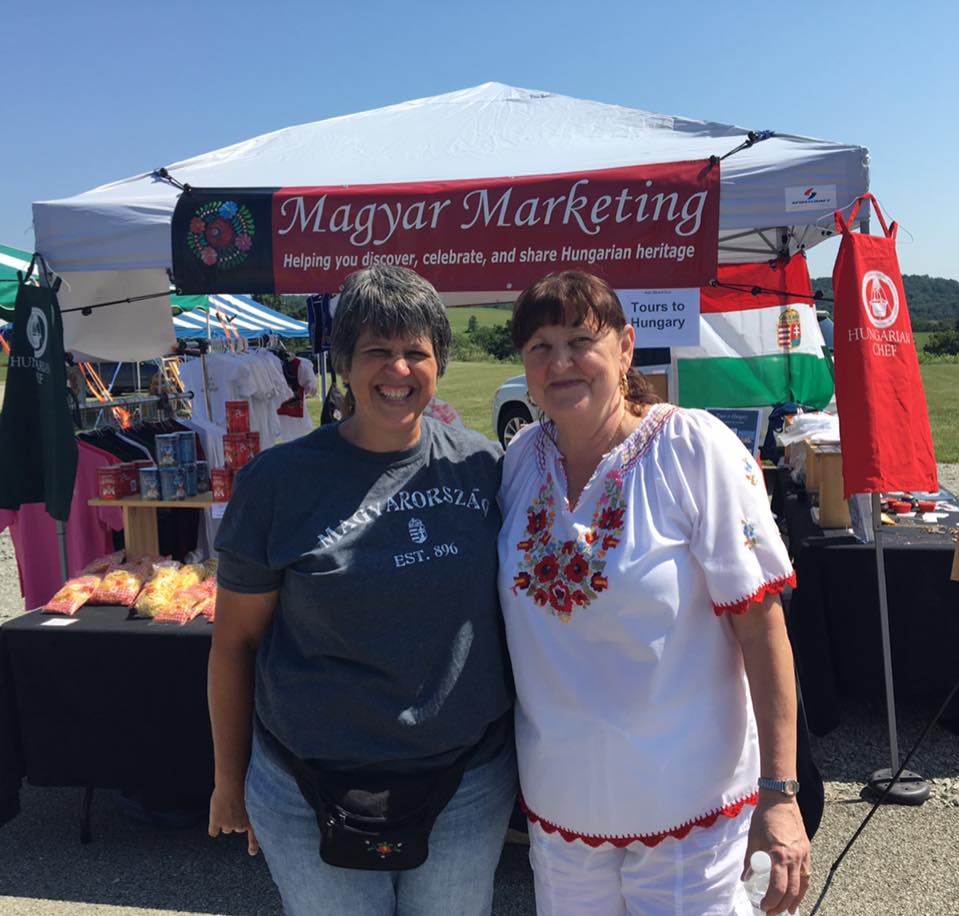
What did you keep from your mom’s business, and what have you changed?
The Hungarian Store still sells Hungarian food, mugs, aprons, etc., like my mom did. She had lots of books in Hungarian, I have only very few since our current customer base includes few Hungarian readers. When she passed away, we continued going to the big Hungarian festivals, like the ones in New Brunswick, NJ, Phoenix, AZ, Sarasota, FL, Atlanta, GA, Boston, MA, Chicago, IL, Cleveland, OH, Toledo, OH, etc., but it meant a lot of driving from Indiana. As we got older, it became too much work. When COVID started, we stopped attending festivals, and since then, we’ve been operating mostly online. I still find it the most exciting to meet people; I don’t even care if I sell anything just because it’s so much fun to be there—that’s a part of the business that I miss…
Let us know what kind of online classes you offer.
We started offering Hungarian language and cooking lessons. For some families, particularly for 56ers or even newcomers, passing down the food heritage wasn’t a big deal, but for third or fourth generations, it is. And so is the language. There is a delightful person in Kentucky, Tünde Dugantsi, who teaches people how to decorate amazing mézeskalács (gingerbread cookies). During COVID, we offered monthly cooking classes together, because none of us could do what we normally did. At one point, people attending the class wanted to learn how to make lard. Tünde was really surprised but said: ‘OK, I’ll teach you how to do it, since I don’t like the ultra-processed lard that’s available in the stores.’ Lots of food recipes sound simple, but it’s not easy to find proper ingredients, like spices, cheese, or chicken feet in the U.S., and some people are nervous about getting it wrong. It’s nice to have a friendly environment where people can learn even what is considered by some to be a simple dish. We still offer Hungarian cooking classes about six times a year.
Our language classes are mostly for adults, but we also have a couple of high school attendees, too. We offer private, semi-private, and small group classes. We have at least 16 regular, weekly classes with four to seven people each, that is at least 100 students in a year, meeting approximately 40 weeks out of the year. The students are from everywhere in the U.S., including some from Canada, but mainly the Northeastern US, where the Hungarian American population is concentrated. The biggest challenge for me with our classes is that I want to be in all of them, but I’m not always free to be…What else do we do? We’ve done folk art classes with somebody who lives in the UK and taught us about Kalocsa embroidery and the history behind it for four weeks. Tímea Szép, living near Ligonier, Pennsylvania, teaches us how to decorate eggs using the wax resist method. She is from Transylvania and learned to decorate eggs from a Hungarian from Toledo, OH. And we are always developing new opportunities.
What about the other new parts of your business?
Both Hungarian Living and Magyar Living Tours exist because we like to equip people with various ways to connect with their heritage. We started with Hungarian Living as a free website, more of a resource about Hungarian events, and some recipes, and we also run our podcast on it. We advertise any Hungarian event we become aware of—the only criterion is that the promotional piece has to be in English, because I don’t want anybody to feel stupid for not knowing Hungarian. And there’s a creative area on the webpage, where people can express themselves creatively about their Hungarian heritage. For example, somebody painted their kitchen cupboards, stepping stones, or even fan blades with a Hungarian theme that I found fascinating. Is it authentic folk art? No, but it’s a way to honor their Hungarian heritage creatively. We share the results or even the ways they did it, so that people start thinking outside of the box about what they can do to share their heritage—it’s not always going to look the same in every family. So, the Hungarian Living website is just a little bit of information on some of the things we do, mainly to encourage other people to start doing them. There’s so much that can be done or can happen even if you don’t speak any Hungarian. If you’re the person in your family who cares about your Hungarian heritage but you don’t share what you know, who is going to? It’s up to you to do it. You might be the only person in the family who cares about it, so it’s really important to keep it alive in the family.
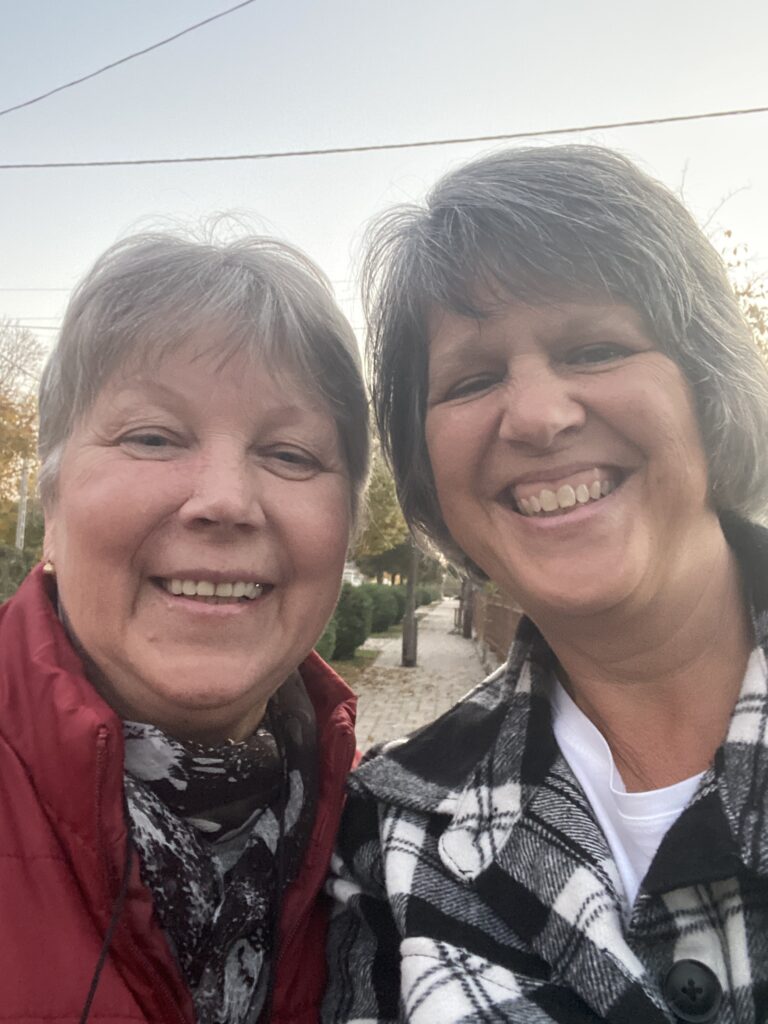
What if people do care, but don’t know how to share family information?
That’s exactly the reason why we do our Family History Writing Workshop with Réka Bakos in addition to the language classes. There are about 1.3 million people with Hungarian roots in the U.S., and lots of them don’t know what to do with their family documents or how to document the family story so it doesn’t get lost. In our social media Hungarian genealogy group, somebody can unlock something just because they speak the language, which can open up an entirely new angle for them to understand their family background. On the other hand, learning the language is important, but it’s also hard; therefore, we try to do a lot of other things because we know that people are looking at their heritage from a lot of different angles. Genealogy is one of them; writing your family story is another angle. We were also doing a little of that before I met Réka, but I knew I didn’t have the opportunity to teach an entire course. When I met her last year in Budapest, I asked her to consider teaching a class to guide people through the process. We have a four-session online course. Moreover, we decided to also make it available on the website in a pre-recorded format.
You mean the store basically funds the other projects?
Yes. Like the Hungarian Heritage Expo, which is another opportunity for people to meet and learn about each other’s work. Sometimes those people end up teaching classes with me, like Tímea Szép, who just loves decorating eggs and sharing her knowledge. These are the people that I’m looking for, because some become too business-oriented, and that’s not fun for me. When it’s somebody’s passion and we can connect, then it’s fun for everyone. These people love what they do, and the audience feels that enthusiasm. People become so attached to their teachers that some of our groups have been meeting for five years. We planned to launch the Expo for years, but we started in February 2024. This year we had one in March, and we’re doing the next on 25–29 August. Since our tours are usually in May, we’ll organize the Expos probably in October in the future.
Let’s then talk about the tours first. Who is interested in them, and where do you take those who join?
I’ve been working with a tour partner in Hungary since 2015. Andrea Tordai is an amazing person; she knows Hungary inside and out. We design the tours together: I give input on where we’re going to go, and then she makes it happen. She typically goes with us, even though she owns the company, does inbound tourism, and has other guides, too. We’ve done up to three tours in a year, most often two. On our tours, there always has to be a folk artisan, folk music or dance, and a castle—I mean a vár, not just a kastély—visit must also be included, and the whole experience cannot be too ‘touristy’. We love to connect with real people, locals. Once, when we ran out of pálinka, my tour partner called her mother, and she invited the whole group to her mother’s house for a drink. Everybody was very moved by that level of hospitality, and was excited seeing the countryside life so closely, and thought about their predecessors who very probably lived in similar circumstances and scenery. We also visit areas in the Carpathian Basin outside of Hungary with a significant Hungarian population, so that people have a better understanding of the history of Trianon. We’ve been to Serbia, Croatia, Slovakia—just close to the border, but we usually go deeper into Transylvania (Romania).
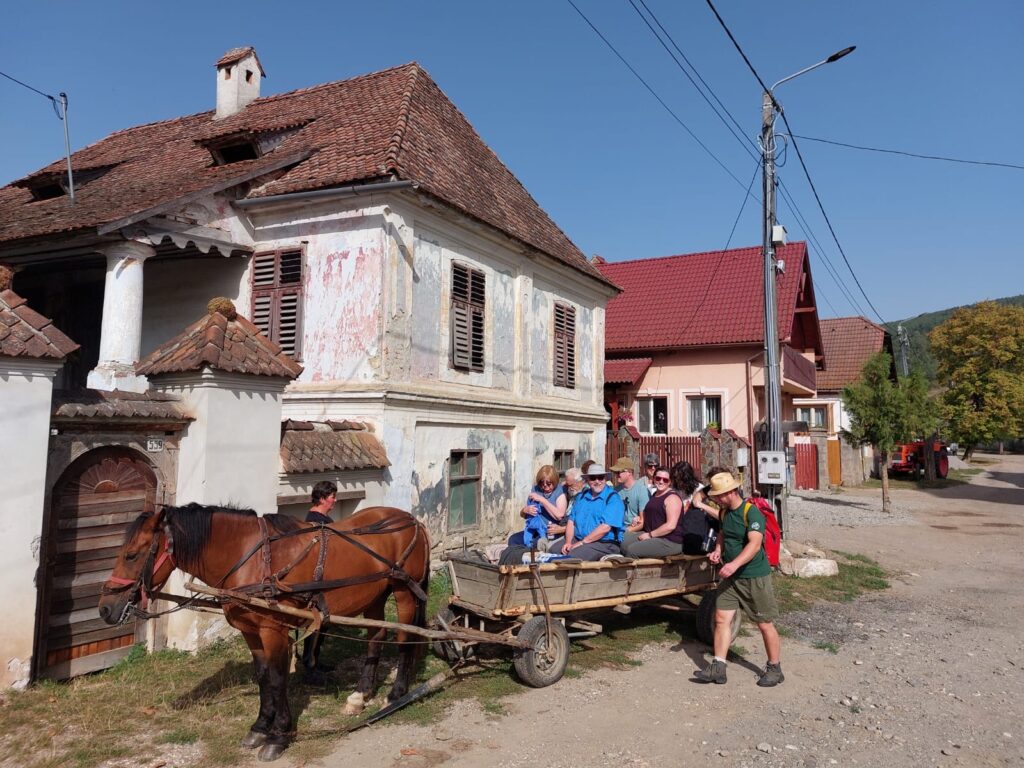
And now let us know more about the Expo. What can we expect this year?
The Hungarian Heritage Expo is another way for people to learn about Hungarian topics. Education on Hungarian culture is very strong in Hungary, but as soon as you’re out of the country, people don’t necessarily know who Petőfi or Kodály is. This year we have 25 presentations during five workdays. Every day, there are about five presentations that can be watched for free for 24 hours. The next day, a new set becomes available, so they’re not available all at once. If somebody wants, they can pay to have access to the videos for the next six months for a very nominal fee of $47 if purchased at the early bird rate.
‘There are about 1.3 million people with Hungarian roots in the U.S.’
So far, we’ve had some fantastic presentations—when people are enthusiastic about what they do, they are excited to talk about it. For example, we had a German woman who knows all about Mangalica pigs, we had a presentation on the mini statues in Budapest by Kinga Tittel, and about Hungarian folk music by Zina Bozzay. I just started getting connected with some guys who make zithers in the U.S., so I hope to have their presentations during this Expo. This year, we’ll learn about falvédő (wall protectors), how to get Hungarian citizenship, and we will also learn the behind-the-scenes scoop about the Proud and Torn project, an interactive website and visual family history created by Bettina Fabos. I learned about the project at an AHEA (American Hungarian Education Association) conference a number of years ago, and it really made an impression on me. This year, Patti McCracken will present her book titled The Angel Makers—a dramatic story where arsenic was being used in a community in Hungary in the 1920s. There will be a lady who was born in South Africa, has a Hungarian father, and lives in the U.S., and she’ll tell us about her life experiences. We can also learn about the scholarship programs that are available to study in Hungary. Emese Latkóczy is going to talk about Hungarian minorities in the Carpathian Basin, while Gábor Kiss about the Unitarians in Transylvania. Anna Fenyvesi will present about Hungarian American cemeteries, Klaudia Kovács about her film called Torn From the Flag, and you’ll talk about your experience in the U.S. and your interview book series, Being Hungarian in America.
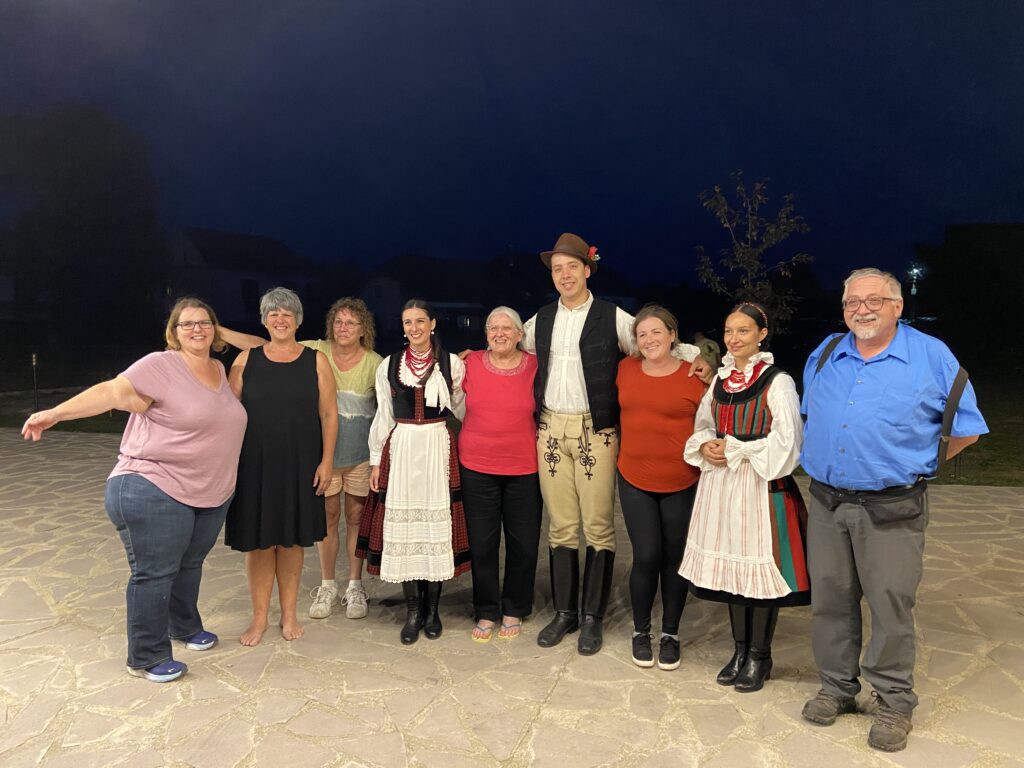
In addition to the presentations, there will be sessions open for discussion where we can meet online and talk live about sharing heritage, genealogy, etc. Previously, about 1,500 people participated, and it will continue to grow as people experience it and enjoy it. I want it to be word of mouth. What’s really interesting is that participants are attending from at least 15 countries around the world, including South Africa, New Zealand, Guatemala, Mexico, Brazil, etc.
Your husband is not Hungarian. How did he get so much involved, interested, and enthusiastic about your Hungarian projects?
I think he had a lot of respect for my mom, and he loves visiting Hungary and Transylvania. He took language lessons for four years online just because he met our relatives and wanted to deepen his connection to the culture. His grandmother was born in the Netherlands and came over when she was very young. His dad also died when he was very young. His aunts made sure that we had all the Dutch things, food that we knew—the same thing that we’ve been doing, relating to the Hungarian heritage. So we have several similarities. I think he’s always a learner, and for him, it’s just very interesting to know this much about the culture and experience it. As far as my business is concerned, he could not help too much, since he had his own profession, but some of our kids were helping him earlier, and now that he is retired, he helps me a lot. I couldn’t do all this without him. He takes care of lots of video and podcast editing. Our children are now less involved. If I have a cooking class, my son joins me when he can, because he loves to cook Hungarian food, especially chicken paprikash, and the others are happy to eat it. His friends all know about rakott krumpli and cserkészkolbász…He is like a Hungarian food ambassador. My grandchildren also have a good sense of what Hungarian is, even though they are just little, because they see it all the time, just like my children did back in the day. The little ones haven’t been to Hungary yet, but all the spouses were, and they all know how life is in Hungary, and they understand the history of Trianon, too.
Finally, can you share some information about Hungarians in Indiana?
There are a few people in Indiana, even in Evansville, who have Hungarian heritage. One of them I found at the post office when I was mailing a package, and she happened to just look over and saw my Magyar Marketing label, and she told me she was Hungarian. In Terre Haute, Indiana, there’s a group of Hungarians whose ancestors arrived in the early 1900s. And there’s a bunch of Hungarians in Louisville, Kentucky, too, who were born in Hungary, and some with an extended ancestral heritage of Hungary. In the South Bend, Fort Wayne area of Indiana, there are some old Hungarian Americans who used to work at the Studebaker factory. Nowadays, with less factory work and the world being a different place, fewer Hungarians are coming to those areas. Bloomington, IN, has some Hungarians because of the university. They even have a Hungarian language program there and a little place where they regularly meet to speak Hungarian; they even offer cooking classes sometimes and have picnics. Valeria Varga is very active there with her students and visiting professors. In Northern Indiana, where it gets closer to Chicago, there’s no industry or academics that bring in Hungarian immigrants these days. But there are still many second, third, and fourth generation Hungarians in Indiana and all around the United States, and they are the ones we want to connect with!
Related articles:
The post ‘How could we not be Hungarians?’ — A Conversation with Elizabeth Szabó Vos from Indiana appeared first on Hungarian Conservative.
Click this link for the original source of this article.
Author: Ildikó Antal-Ferencz
This content is courtesy of, and owned and copyrighted by, https://www.hungarianconservative.com and its author. This content is made available by use of the public RSS feed offered by the host site and is used for educational purposes only. If you are the author or represent the host site and would like this content removed now and in the future, please contact USSANews.com using the email address in the Contact page found in the website menu.

